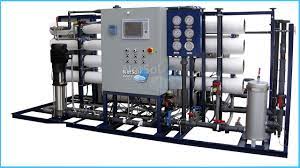How to check the operation of domestic water softening systems
Water softeners are domestic or industrial devices used to remove hard water components, such as magnesium and calcium, from tap water. There are several types of water softening systems, including those that use sodium beads or resins for hard and soft ion exchange. Other systems filter the water to separate calcium and magnesium from the household tap water.
What home water softening systems can do?
Water softening systems can reduce the negative effects of hard water on household plumbing and reduce pipe blockages caused by sediment. These machines reduce water maintenance costs and eliminate the need for frequent purchase and repair of appliances such as coffee makers and shower heaters.
These water softeners can improve the operation of washing machines and dishwashers, prevent the hardening of clothes and prevent the tarnishing of glassware. High hardness water can dry out some people’s skin and hair, but this can be avoided by using water softeners in the home and in the bathroom.
It can also prevent stains caused by hard water on toilets, bathroom tiles, bathtubs, and sinks. Hard ions leave behind orange or brown stains, which are difficult to remove once stained. A lot of scrubbing and very strong toxic chemicals are required to remove it.
How to check if a domestic water softener is working
Prolonged use can cause them to stop working or malfunction. If the softening system may be damaged or not working properly, you should test the system before buying a new softening system. The system may also need minor adjustments.
One way to check if the water softener is working properly is to check if there are enough sodium resin beads in the unit. Sodium beads exchange hard and soft ions and if the sodium beads become saturated with hard elements, they may not work properly. It may be necessary to increase the amount of sodium added or replace it with new sodium resin pellets.
In the kitchen, water softness can also check by boiling tap water in a pitcher for about 15-25 minutes. Let it cool to room temperature and check for any white residue on the bottom of the pan. If there is a white powder on the bottom of the pan, the water is not soft enough. There may also be white particles floating in the boiling water.
If you see similar white residue or stains in your dishwasher, the softening system may not be working effectively. Glasses and dishes should not have white stains or be cloudy. If you have weak water pressure from showers or faucets, the pipes may be clogged due to calcium buildup.
Hard water can also make soaps and shampoos less foamy. Hard water should change the way you bathe or make it harder to wash. Check that skin and hair are dry and that clothes are not wrinkle. Look at bathroom tiles, sinks, and bathtubs for discoloration. The first sign of hardness is a yellow tint before dark stains begin to remain.
What to do if your water softener is not working properly
If you find that the softener is not working properly, you can check the settings on the softener control panel. Perhaps the setting is too low for the hardness. Check if there are enough softening ingredients, such as sodium and potassium. Check the power supply to the appliance and make sure there is no interruption in the water flow between the softener hose and the domestic water pipes.
If the problem persists after some adjustments, you may want to ask your plumber to inspect the unit. You may also want to ask a representative of the water softener supplier to check the problem. You may simply need to repair the existing softening system or adjust the brine injection system.
To extend the life of your softening equipment and improve its efficiency, you should occasionally maintain it in a professional manner. Most residential water softening equipment can last 15 years or more if properly maintained by a professional.
If you are looking for the best home water softener in White City, visit our website waterlogic.pk.
































































